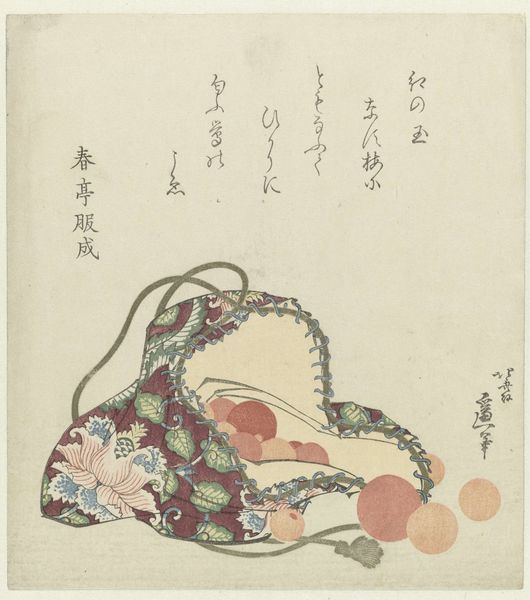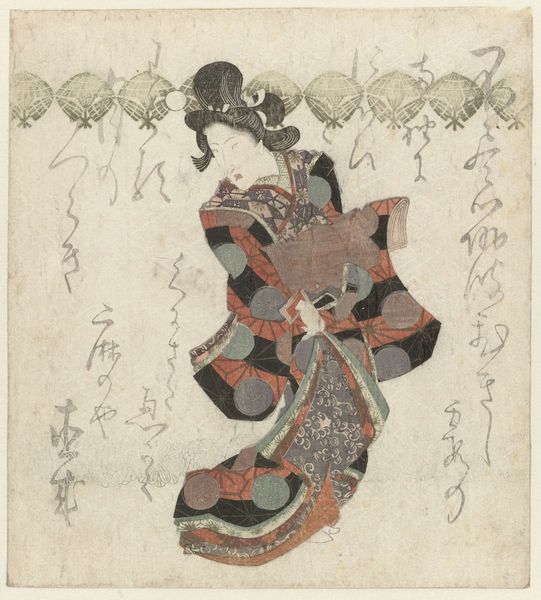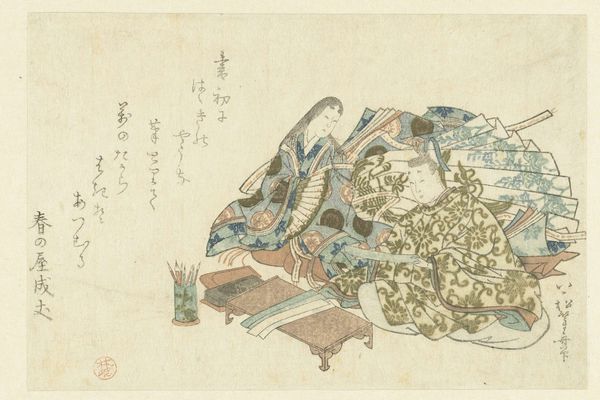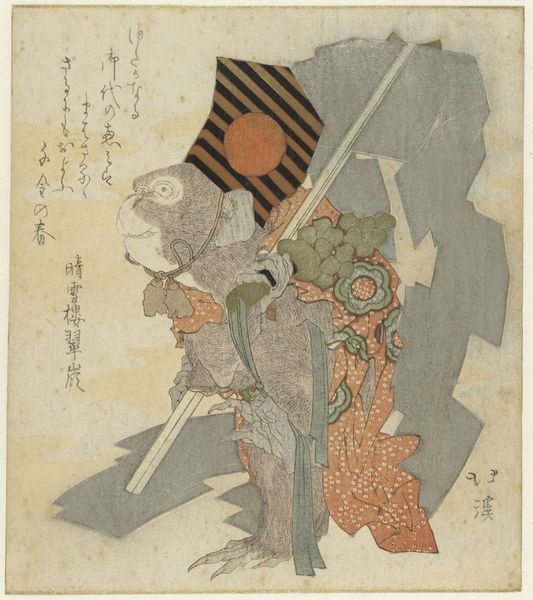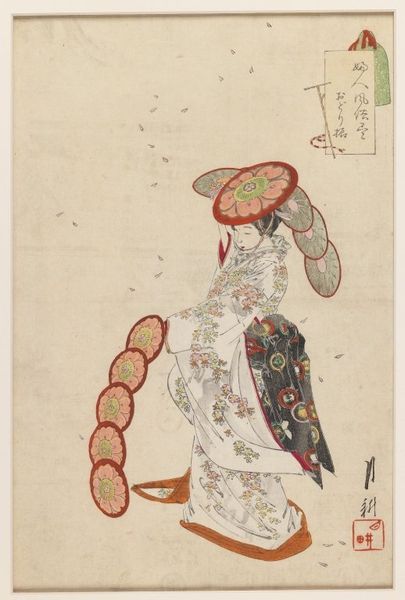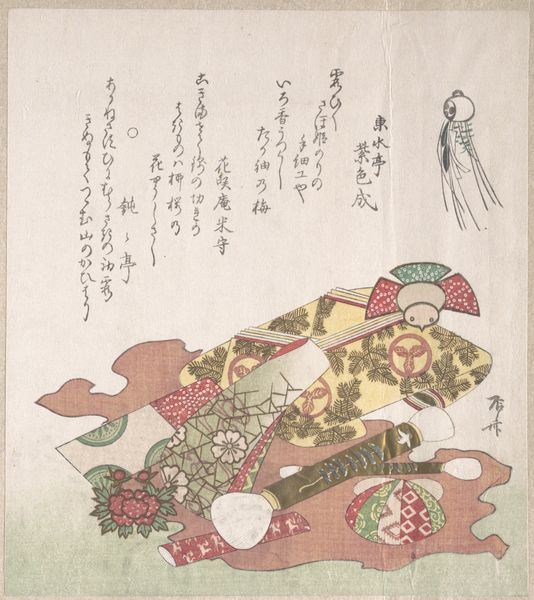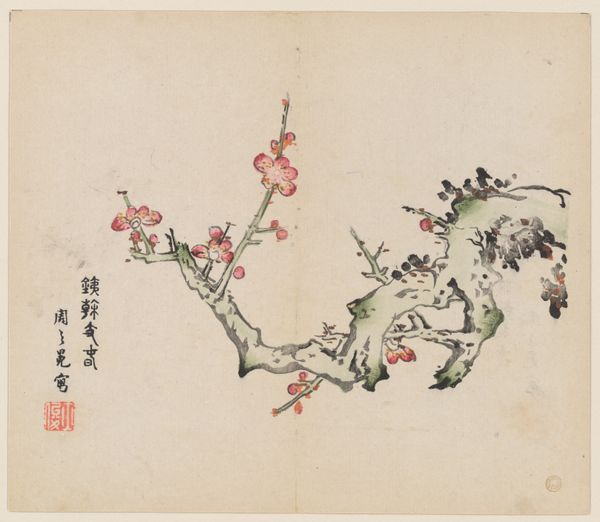
drawing, print, woodblock-print
#
drawing
#
blue ink drawing
# print
#
asian-art
#
ukiyo-e
#
figuration
#
woodblock-print
#
line
#
watercolour illustration
#
genre-painting
Dimensions: height 190 mm, width 169 mm
Copyright: Rijks Museum: Open Domain
Editor: So, this is "The Hobby-horse Dance," a woodblock print from 1810 by Maki Bokusen. It strikes me how the figure and hobby-horse almost blend together, how do you see this artwork? Curator: This piece makes me think about the means of production within the Ukiyo-e tradition. Woodblock printing allowed for mass consumption of art, challenging the notion of the artist as a solitary genius. How does the choice of materials and the labor-intensive process affect its artistic value? Editor: That’s a really interesting point. I never really thought about it in terms of mass consumption of art back then, almost like a precursor to digital images today. Does the 'everyman' element impact our interpretation? Curator: Absolutely. The artist's choice to depict a seemingly ordinary performance, like a hobby-horse dance, suggests a connection to everyday life, or rather documents everydayness. I wonder about the materiality of the print itself, the quality of paper, the pigments used. How do these material choices speak to the intended audience and their purchasing power? Editor: So the specific type of paper, or ink, could indicate whether it was geared towards a wealthy merchant family, versus, say, a family who worked as servants? Curator: Precisely! This directs attention away from symbolism towards how art objects served society. I think of clothing manufacture - like the detail shown on the dancers garments. It's very possible some garments were printed this way, emulating actual textiles through printing technology. Editor: That shifts my perception of the piece. It’s not just a static representation, but also a testament to the artistic and technological manufacturing processes of the time. I will now ask more questions regarding the production process! Curator: And also how this production influenced and blurred social status! An enlightening insight.
Comments
No comments
Be the first to comment and join the conversation on the ultimate creative platform.


